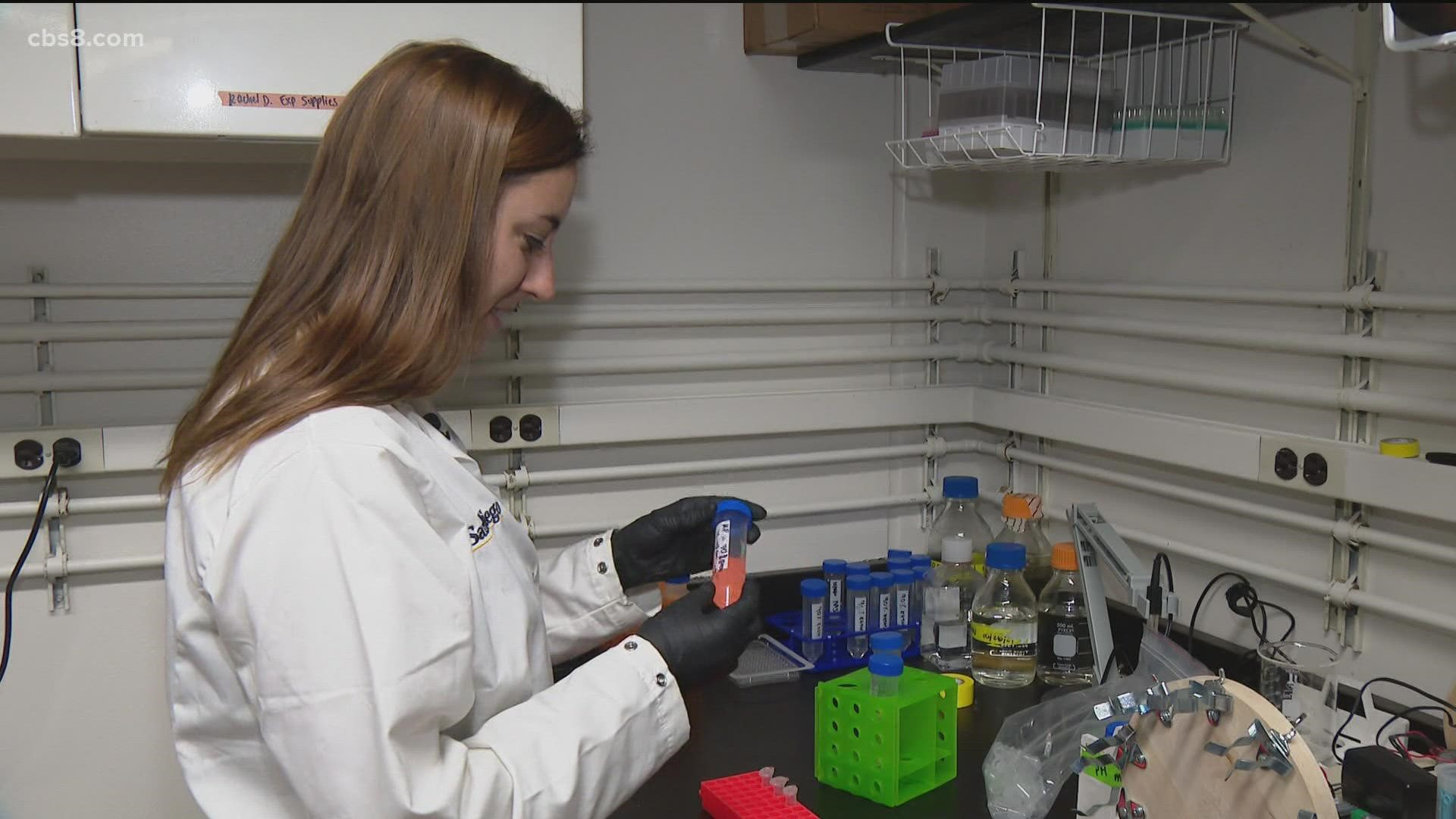SAN DIEGO — Tiny plastics are floating everywhere, in the air, soil, and the water. But until recently there was no practical way of measuring if they’ve made it into our bodies.
In this Earth 8 report, Neda Iranpour shows what a local researcher is discovering about microplastics.
Researcher Kara Wiggin showed CBS 8 the microplastics that have turned the water in a tube a light orange. “They're all little, tiny dots.”
For the purpose of her research at Scripps Institution of Oceanography at UC San Diego, Wiggin who is a PhD student, broke larger plastic pieces into fragments since that’s more like what is found in the real world.
“You can’t see them at all (on the slide),” but you can see them through the microscope.
As she shines a blue light, they turn up green on the screen. And Wiggin counts them all. “I’ve been doing this for 10 years, I’m an amazing counter,” she says as she taps her phone with each microplastic she sees on the screen.
She was able to determine each slide has about 1500 microplastics.
That information helps her know what she’ll be putting into each oyster, “this is an oyster in here and it’s in sterile sea water. Tomorrow I’ll add microplastics and the bacteria that causes food poisoning.”
In this specific study, she’s testing to find out if microplastics shuttle food poisoning into oysters. Oysters already filter water along with microplastics, so this is a more controlled study of the impacts plastics have on them.
Wiggin said, “microplastics have been an interesting field, in the past two years we've come a long way to detect them.”
In fact, the latest research shows microplastics have been discovered in our lungs and blood.
View the study on lungs below:
View the study on blood below:
“It’s not that it wasn’t there, it's just the methods are complex expensive and time consuming,” she explains.
The newest form of testing has proven what scientists have long suspected. “Now we can use it to test more parts of the body, our tissue, our brain. Now we are able to definitely say that they stay in our body.”
But many microplastic researchers still need to pinpoint how much we absorb, how much we release, and the harm they may cause.
Throughout the past couple years, you may have seen articles that state we ingest up to one credit card per week, equaling 52 credit cards a year?! Wiggin explains a lot of that depends on how much plastic is in your life.
If you drink from plastic water bottles regularly, if you eat out of plastic containers often, If you wear clothes made of polyester, nylon, spandex, the microplastics can go into your body.
The more you’re surrounded by plastic the more you take it in.
There is really no escaping it, “they're hard to avoid because we've created such a mess. When you're sitting in your living room and there’s a ray of light and you can see particles in the light, a lot of those are probably plastic.”
That’s because all the plastic we use gets broken down by friction or melting and ends up in the air and in the ground, but it also ends up in the ocean where it breaks down more. “They end up being so small they are light weight can flow through air and the wind,” Wiggin says.
It all goes into our food. Where it circles right back to us by eating breathing or touching, “everything on land and in the ocean comes back to humans, it’s an interconnected, circular motion.”
And as with most research, the more awareness and knowledge scientists like Wiggin can share the more people may consider change.
Wiggin says people often ask her what can be done to try to clear microplastics from the Earth. She suggests cutting back on plastic use in whatever way you can. She also suggests speaking up with local, state, and national leaders to let them know of your concerns.
WATCH RELATED: Earth 8: Microplastics are polluting beaches at an alarming rate (September 2019)

